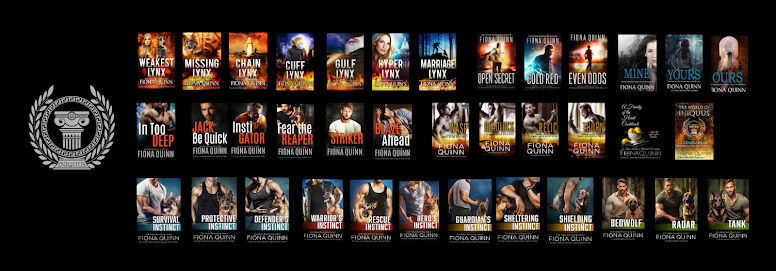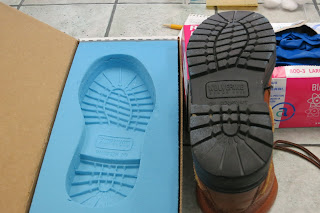Along with several other strands of study, the last two WPA
conferences provided classes in bloodstain patterns, fingerprinting, and
alternate light sources (ALS) conducted by Sirchie instructors. Because of the
standing room only enthusiasm for these classes, Sirchie offered a five-day
Evidence Collection training session for writers at their own complex in North
Carolina. Sirchie makes hundreds of products for the law enforcement community
and I felt this would be a great opportunity for Detective Kerrian (my
protagonist) to learn more about the latest and best gadgets being used to
catch the crooks.
Wolverine cast
Criminals rob, murder, rape or otherwise inflict bodily harm
upon their victims. Physical evidence at a crime scene is an essential part of
figuring out what happened. It is up to the police officers, investigators, and
examiners to recognize what is and is not part of the evidence and then
interpret the importance of each fiber, fingerprint, bloodstain, and other
material in order to secure a conviction of the correct individual.
One of the most overlooked pieces of evidence at a crime
scene is created by footwear.
If a window breaks as a thief enters the premises during the
commission of a burglary, the glass will fall into the house, and onto the
floor or rug below the window. When the thief steps through the window, unless
the thief has wings, he/she will probably plant a foot right in the middle of
the glass. And walk through the house, most likely tracking minute pieces of
that glass. That glass may also become embedded in the grooves of the sole of
the shoe, creating a distinctive footprint.
If the investigating officer can place a suspect at the
scene with the footprint, then there is probable cause to fingerprint that
suspect and hopefully establish a link to the crime.
A new method of eliminating suspects right at the scene
involves stepping into a tray that contains a pad impregnated with a harmless
clear ink that doesn’t stain, then stepping onto a chemically treated impression
card. (So safe that it’s often used on newborn babies for the hospital records)
No messy cleanup, immediate results, and it can even show details of wear and
tear on the shoe. This can be a way to establish a known standard (we know
where this impression came from) to compare with multiple tread prints at the
scene.
Footwear Clear Ink Impression
Another tool for creating a known standard is the foam
impression system. It takes a bit longer, (24 hours) but clear, crisp
impressions can be made, including of the pebbles and bits stuck deep into the
grooves and the writing on the arch. Very helpful when trying to place suspects
at the scene. A rock stuck in the sole is a random characteristic that can’t be
duplicated, so becomes another point of identification.
We definitely wanted to try this method for ourselves. Each
of the writers stepped into the box of stiff-ish foam – a bit like stepping
into wet sand.
Using foam impression system
An impression is made instantaneously. Look at the detail –
down to the wear on the heel.
Foam impression of Wolverine boot
We used pre-mixed dental stone (made with distilled water
and the powder) to fill the impression.
Making the cast with pre-mixed dental stone
We waited 24 hours for them to become firm enough to pop out
of the foam. We now had permanent records of the footwear treads, which could
be used for comparison to other prints found at the scene. There were more than
a dozen of us walking through that room every day on a regular basis and
assorted other visitors tramping through the perimeter. If a crime occurred
before we left for the week, we’d have a LOT of eliminating to do, but we were
ready!
Photo: Footwear casts
Occasionally footprints are found on the ground outside a
window or in the gardens surrounding a house after a burglary or homicide. Ever
see a crime show on TV where the
fictional investigator makes a snap judgment about the height and weight of the
owner of the footprint because of the depth of the impression? That’s merely a
plot device and is not scientific evidence in real life. A crime scene
photographer or investigator can photograph the footprint (next to a
measurement scale), make a take away cast, and then compare the impression with
those of the suspects or other bystanders at the scene. Beware: making a cast
of the print destroys the print, so a photograph must be taken before pouring
that first drop of dental stone.
Footprints can be found at bloody crime scenes as well. The
suspect walks through the blood, tracks it through the house, cleans it up, but
the prints are still there, even though not obvious to the naked eye. As we
learned during the ‘Blood and Other Bodily Fluids’ session, blood just doesn’t
go away, no matter how hard you try to get rid of it. It seeps into the cracks
and crevices of a floor and even behind baseboards.
A savvy investigator will collect sections of carpet (or
flooring) taken from where the suspect might have walked during the commission
of the crime, then conduct a presumptive test for blood (LCV - Aqueous Leuco
Crystal Violet), find a usable footprint, compare it to a known standard, and
then be able to place the suspect at the scene.
Footwear Print
Kudos to Robert Skiff, the Sirchie Training Manager/Technical
Training Specialist who conducted the classes with his assistant, Chrissy
Hunter, all week. He fielded our many (sometimes wild) questions with solid
expertise as we attempted to find the perfect scenarios for our fictional
crime-fighters and criminals.
~~~~~~~~~~~~
Patti Phillips is a
transplanted metropolitan New Yorker/north Texan, now living in the piney state
of North Carolina. Her best investigative days are spent writing, cooking,
traveling for research, and playing golf. Her time on the golf course has been
murderously valuable while creating the perfect alibi for the chief villain in
“One Sweet Motion.”
Did you know that
there are spots on the golf course that can’t be accessed by listening devices?
Of course, it helps to avoid suspicion if you work on lowering your handicap
while plotting the dirty deeds.
Patti Phillips writes
the www.kerriansnotebook.com blog
and the book review site www.nightstandbookreviews.com
Thanks for stopping by! Why not take a second to +1 this article and send it to your friends on FB and Twitter? Buttons conveniently found below.
Thanks for stopping by! Why not take a second to +1 this article and send it to your friends on FB and Twitter? Buttons conveniently found below.


 \
\






